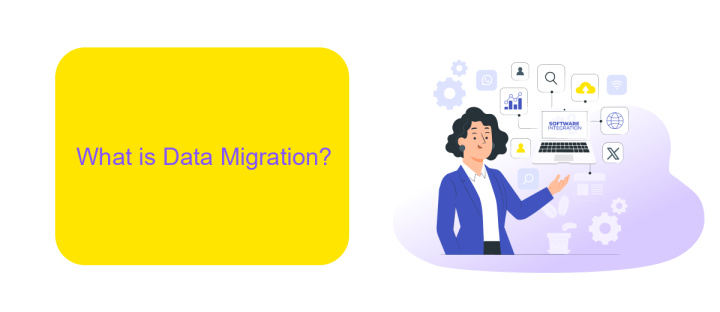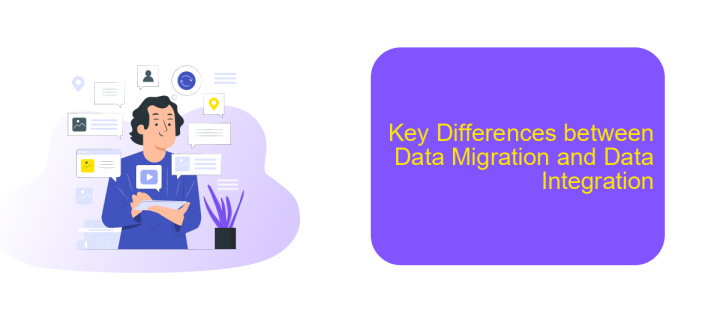Difference Between Data Migration and Data Integration
Understanding the distinction between data migration and data integration is crucial for effective data management. While both processes involve handling data, they serve different purposes and require distinct approaches. Data migration focuses on transferring data from one system to another, whereas data integration aims to combine data from various sources to provide a unified view. This article delves into their differences to offer clarity.
Introduction
Data migration and data integration are two crucial processes in the realm of data management, each serving distinct purposes. While data migration involves transferring data from one system to another, data integration focuses on combining data from different sources to provide a unified view. Understanding the differences between these processes is essential for businesses aiming to optimize their data strategies.
- Data Migration: Moving data from one system to another.
- Data Integration: Combining data from multiple sources to create a comprehensive dataset.
Whether you are migrating data to a new platform or integrating various data sources for better insights, the right tools can make a significant difference. Services like ApiX-Drive offer powerful solutions to streamline these processes, ensuring data accuracy and efficiency. By leveraging such tools, businesses can effectively manage their data, leading to improved decision-making and operational efficiency.
What is Data Migration?

Data migration is the process of transferring data between different storage systems, formats, or computer systems. This process is crucial during system upgrades, consolidations, or when integrating new applications that require access to existing data. The primary goal of data migration is to ensure that the data remains accurate, consistent, and usable in its new environment. It involves several steps, including data extraction, transformation, and loading (ETL), which must be meticulously planned and executed to minimize disruptions and maintain data integrity.
Successful data migration requires thorough planning and testing to address potential challenges such as data loss, corruption, or downtime. It is essential to understand the source and target systems' structure and compatibility to ensure a smooth transition. Tools and services like ApiX-Drive can facilitate the data migration process by automating data transfer tasks and ensuring seamless integration between various applications and systems. By leveraging such tools, organizations can reduce the risk of errors and accelerate the migration process, ensuring that critical business operations continue without interruption.
What is Data Integration?

Data integration is the process of combining data from different sources into a single, unified view. This process is essential for businesses that need to analyze and derive insights from diverse datasets. Effective data integration allows organizations to streamline operations, improve decision-making, and enhance customer experiences.
- Extracting data from various sources such as databases, cloud services, and applications.
- Transforming the data into a common format to ensure consistency and compatibility.
- Loading the transformed data into a centralized repository for analysis and reporting.
Many tools and services facilitate data integration, making it easier for businesses to manage their data flows. One such service is ApiX-Drive, which enables seamless integration between multiple applications and platforms without requiring extensive technical expertise. By leveraging ApiX-Drive, organizations can automate data transfers, reduce manual effort, and ensure data accuracy across their systems.
Key Differences between Data Migration and Data Integration

Data migration and data integration are critical processes in managing data within an organization, but they serve distinct purposes. Data migration involves transferring data from one system to another, often during upgrades or system replacements. This process ensures that data remains accessible and accurate in the new environment.
On the other hand, data integration focuses on combining data from multiple sources to provide a unified view. This process is essential for businesses that need real-time data access and analytics across various platforms. Integration often involves continuous data flow, whereas migration is typically a one-time event.
- Purpose: Migration is for moving data; integration is for combining data.
- Frequency: Migration is usually one-time; integration is ongoing.
- Complexity: Migration can be simpler; integration often requires more complex setup.
- Tools: Migration uses ETL tools; integration may use services like ApiX-Drive.
Understanding these key differences helps organizations choose the right approach for their data needs. While data migration ensures data continuity during transitions, data integration enhances data accessibility and usability across different systems, often leveraging tools like ApiX-Drive for seamless connectivity.


Conclusion
In conclusion, understanding the difference between data migration and data integration is crucial for any organization aiming to manage its data effectively. Data migration involves transferring data from one system to another, often during system upgrades or consolidations. On the other hand, data integration focuses on combining data from different sources to provide a unified view, enabling better decision-making and operational efficiency.
While both processes are essential, they serve different purposes and require distinct strategies and tools. For instance, services like ApiX-Drive can simplify data integration by automating the connection between various applications and data sources. This not only reduces manual effort but also ensures real-time data synchronization, making it easier to maintain data integrity across platforms. By leveraging the right tools and understanding the unique requirements of each process, organizations can optimize their data management strategies and drive more informed business outcomes.
FAQ
What is the primary difference between data migration and data integration?
When should you consider data migration?
What are the main challenges associated with data integration?
Can data migration and data integration be automated?
Why is data integration important for businesses?
Apix-Drive is a universal tool that will quickly streamline any workflow, freeing you from routine and possible financial losses. Try ApiX-Drive in action and see how useful it is for you personally. In the meantime, when you are setting up connections between systems, think about where you are investing your free time, because now you will have much more of it.

